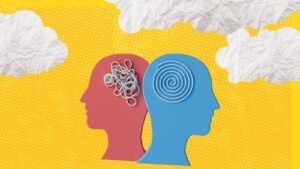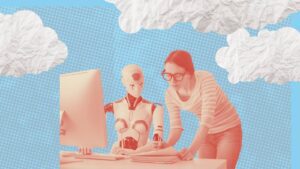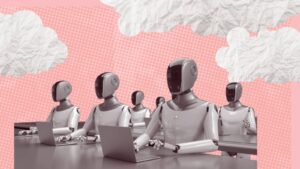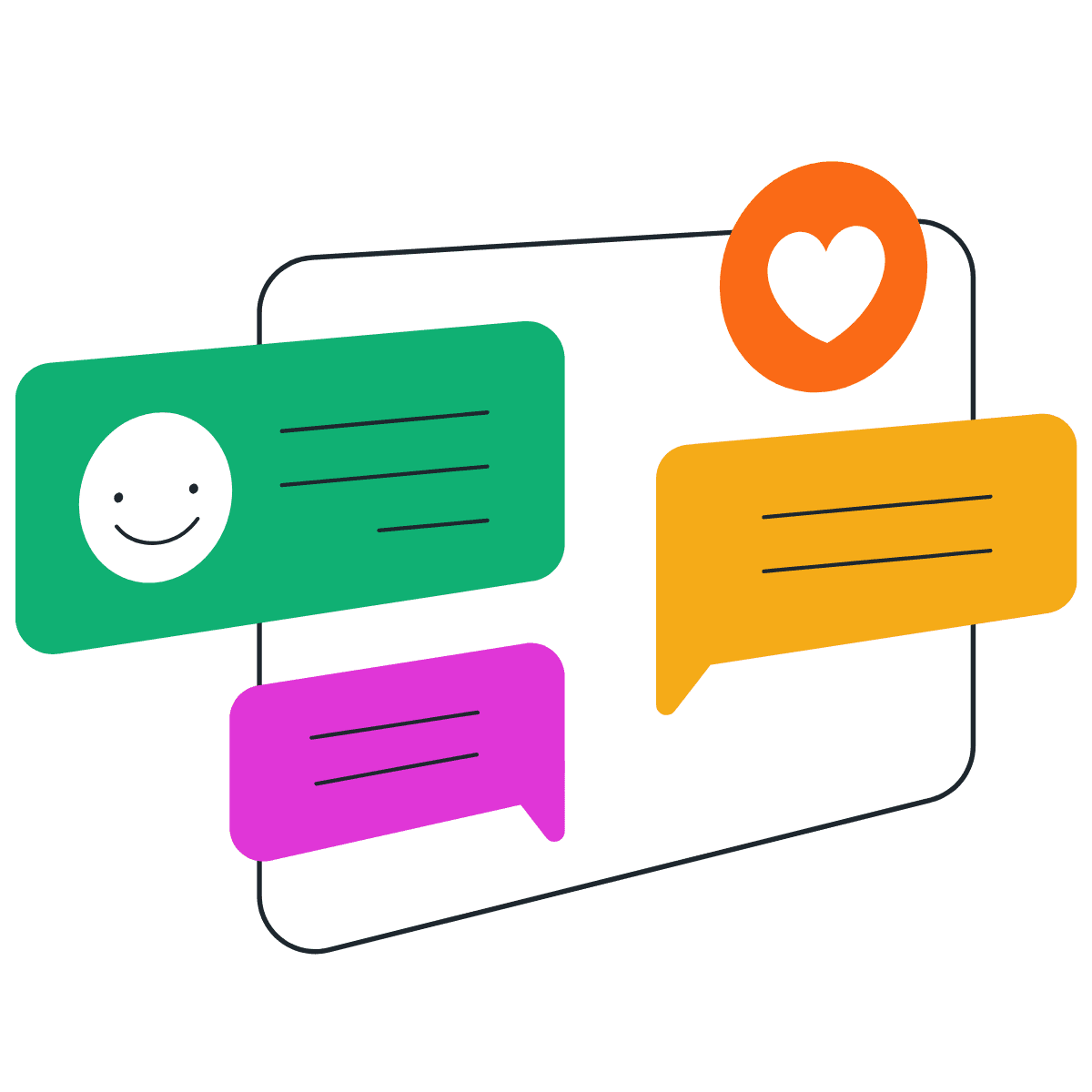The relationship between LLM and generative AI
Summary LLMs understand language and intent and handle text-based tasks like writing and analysis. Generative AI turns those insights into visuals and multimedia content. Together, they improve how people generate ideas, produce work, and solve problems. |
You can think of AI like a human body. Machine learning acts as the brain that learns from experience. Generative AI functions as the voice and hands that create new things. RAG serves as the senses that collect information from the world. LLMs operate as the language center that turns thoughts into words. AI Agents act as the full person in motion, using all these parts together to think, act, and complete work.
Generative AI is a type of artificial intelligence that learns from data to generate new text, images, code, or sounds. Large Language Models (LLMs) are a type of generative AI that specializes in human-like writing and natural language responses. Smaller versions, called Small Language Models (SLMs), specialize in specific tasks or topics. Retrieval-Augmented Generation (RAG) improves the accuracy of these models by drawing information from external sources. AI Agents go even further by using these tools to work independently in writing, research, or analysis. All of these systems rely on machine learning (ML), which helps them identify patterns and improve their results over time.
What is an LLM (large language model)?
A large language model is an AI system trained on massive amounts of text. It learns the structure and meaning of language so it can generate text that sounds natural. When you write a prompt in ChatGPT, Claude, or Gemini, the model reads your input, identifies intent, and produces a coherent response.
LLMs use transformer architecture, which helps them understand context instead of just repeating memorized text. You can use them to draft blog posts, summarize reports, generate HTML code, or answer questions in a conversational tone. Popular LLMs include GPT-4 from OpenAI, Claude from Anthropic, Gemini from Google, and LLaMA from Meta.
What is generative AI?
Generative AI refers to systems that create new content based on data patterns. These systems can produce text, images, audio, video, or even 3D designs. They recognize how data is structured, then use that understanding to generate new material that fits within those patterns.
Generative AI tools can do more than just write. You can use it to create visuals, videos, or music through tools such as Midjourney, DALL·E, and Runway. Many newer models handle multiple formats, known as multimodal AI. For example, you can generate an image, a headline, and a short caption for a campaign within a single tool.
How LLMs power generative AI
Large language models form one branch of generative AI. They handle text-based creation, while other models manage visuals, audio, or video. LLMs empower generative AI to comprehend, structure, and communicate through language. When you use a chatbot to get an answer, the LLM generates the words, while the broader generative AI framework manages design, context, and delivery.
Beyond LLMs, other models handle various types of data and different creation processes. These include:
- Generative Adversarial Networks (GANs) create realistic images by using two neural networks that work against each other. One network generates new images, while the other evaluates how real they look. Through repeated competition, the generator learns to produce visuals that resemble authentic photographs or artwork.
- Variational Autoencoders (VAEs) learn to compress and reconstruct data, which allows them to generate new variations of what they have learned. You can use VAEs to produce slightly different versions of existing examples, such as reimagined product designs or stylized visuals that keep the same structure but vary in detail.
- Diffusion models begin with random noise and gradually refine it into a detailed image. Each step removes some of the noise, which allows the model to produce highly realistic outputs. Many of today’s image generators, including Midjourney and DALL·E 3, use diffusion techniques to achieve lifelike quality.
Together, these model types form the foundation of modern generative AI and can produce everything from new artwork to data-driven visual assets.
LLM vs generative AI: similarities and differences
You often hear people use LLMs and generative AI interchangeably, but they have distinct functions. Generative AI encompasses all models that generate new outputs, whereas LLMs are a subset of generative AI that focuses on language. Understanding the difference helps you pick the right tool for your task, whether you’re writing a product description, designing a campaign image, or aligning ideas with broader objectives and key results.
Training data
LLMs train exclusively on text. They learn how words, phrases, and ideas connect so they can write responses that sound natural and contextually relevant. Generative AI can also be trained with text, as well as visuals, audio, and video. The variety of training data enables generative AI to understand the relationships between visuals, sounds, and text so that it can produce comprehensive multimedia outputs.
Model capabilities
LLMs excel at tasks that involve comprehension, reasoning, and expression. You can use them to set SMART goals, answer questions, write scripts, or structure marketing materials. Generative AI specializes in creation. You can prompt it to design product images, edit videos, compose sound, or build 3D prototypes. When used together, the LLM provides the narrative direction while the generative AI model builds the visuals that bring it to life.
Use cases in marketing
You can use LLMs for language-intensive tasks such as campaign strategy, keyword research, and content writing. They handle the structured side of marketing, transforming briefs, data, and brand guidelines into concise copy. Generative AI drives the creative output, producing brand imagery, motion graphics, and ad visuals at scale. When you connect both systems, you can plan, write, and design full campaigns within a single workflow that reduces production time and keeps every asset on brand.
How can digital marketers use LLMs and generative AI?
You can use LLMs and generative AI across every stage of your content marketing workflow. Instead of thinking of them as separate tools, treat them as teammates that handle specific parts of the process.
1. Research and audience understanding
You can start by using an LLM to analyze audience data. Upload survey responses, reviews, or social comments and ask the model to summarize recurring themes, motivations, and objections. The output helps you segment audiences and refine messaging. Generative AI can then use those findings to create sample personas or mood boards that visualize audience traits. Together, these insights help you understand what your customers value before you create content.
2. Campaign planning and ideation
Once you have audience insight, you can use LLMs to brainstorm campaign angles, slogans, or messaging frameworks. You can provide the model with your brand guidelines, previous campaign results, and SWOT analysis summaries to help generate ideas that align with your tone and performance goals. Generative AI tools can build on those ideas by creating concept visuals, ad storyboards, or color palettes that match your proposed campaign themes.
3. Content creation and production
You can use LLMs to write blog drafts, product descriptions, landing pages, and social copy. When you need visual or multimedia content, generative AI can create brand images, short videos, or motion graphics that match your message. You can also combine both AI systems by prompting an LLM to generate content briefs that feed directly into your image or video generator.
4. Optimization and personalization
After publishing, you can use LLMs to review campaign performance data and interpret marketing KPIs. The model can summarize analytics, highlight what worked, and suggest improvements for the next round. You can also use it to generate multiple email variations for A/B testing. Generative AI tools can then adapt visual assets to different audience segments or formats, such as resizing images for platforms or changing color schemes based on user preferences.
5. Automation and workflow integration
Once you have proven use cases, you can integrate LLMs and generative AI into your standard operating procedures (SOPs). AI copilots can summarize campaign data, generate reports, and draft content directly inside your workspace. AI agents can take on multi-step projects, such as compiling metrics, designing presentation slides, or scheduling content updates. You can start small by automating one repetitive task, such as summarizing weekly reports, and expand as your team becomes more comfortable with AI-led workflows.
As AI automation becomes more ubiquitious, enrolling in generative AI courses and certifications can give you a competitive edge. Many industry leaders like OpenAI, Microsoft, and Google even offer free AI training.
Ready to automate your marketing workflows with LLMs and generative AI?
LLMs and generative AI work best together. LLMs bring reading comprehension and language capabilities, while generative AI expands your creative output with images, sound, and video. When you combine them, you can create assets more quickly, with fewer manual steps and greater consistency.
Suppose you want to automate your content creation workflows with generative AI tools. In that case, I can help you choose the right systems and set up processes that save time while maintaining accurate, creative, and compelling content. Reach out for a free consultation and estimate.
FAQs about LLM vs generative AI
What’s the difference between LLMs and generative AI?
LLMs specialize in generating text and understanding language. They write words, paragraphs, and entire documents that read naturally. Generative AI encompasses LLMs, but also includes systems that create visuals, video, and audio. You can use LLMs for writing and generative AI for multimedia production, often within the same campaign.
What’s an example of an LLM?
Common examples include GPT-4 by OpenAI, Claude by Anthropic, Gemini by Google, and LLaMA by Meta. Every LLM has its own unique strengths. GPT-4 handles reasoning and creativity, Claude emphasizes safety and clarity, and Gemini connects to Google data.
Is ChatGPT an LLM?
Yes. ChatGPT uses OpenAI’s LLM to process your prompts and generate responses. The chat interface makes it easier for you to interact with the model, but the underlying technology that produces the text is the large language model itself.
What’s the difference between machine learning and generative AI?
Machine learning enables systems to learn from data and predict outcomes. Generative AI builds on that process to create new outputs, rather than just making predictions. For example, a machine learning model can forecast which ad will perform best, while a generative AI model can write the ad copy or design the visuals.
What’s an example of machine learning?
You can see machine learning in everyday tools. Email filters identify spam, recommendation engines suggest products, and analytics platforms predict audience behavior. In marketing, you can use machine learning to segment audiences, forecast campaign performance, or optimize ad spend.







